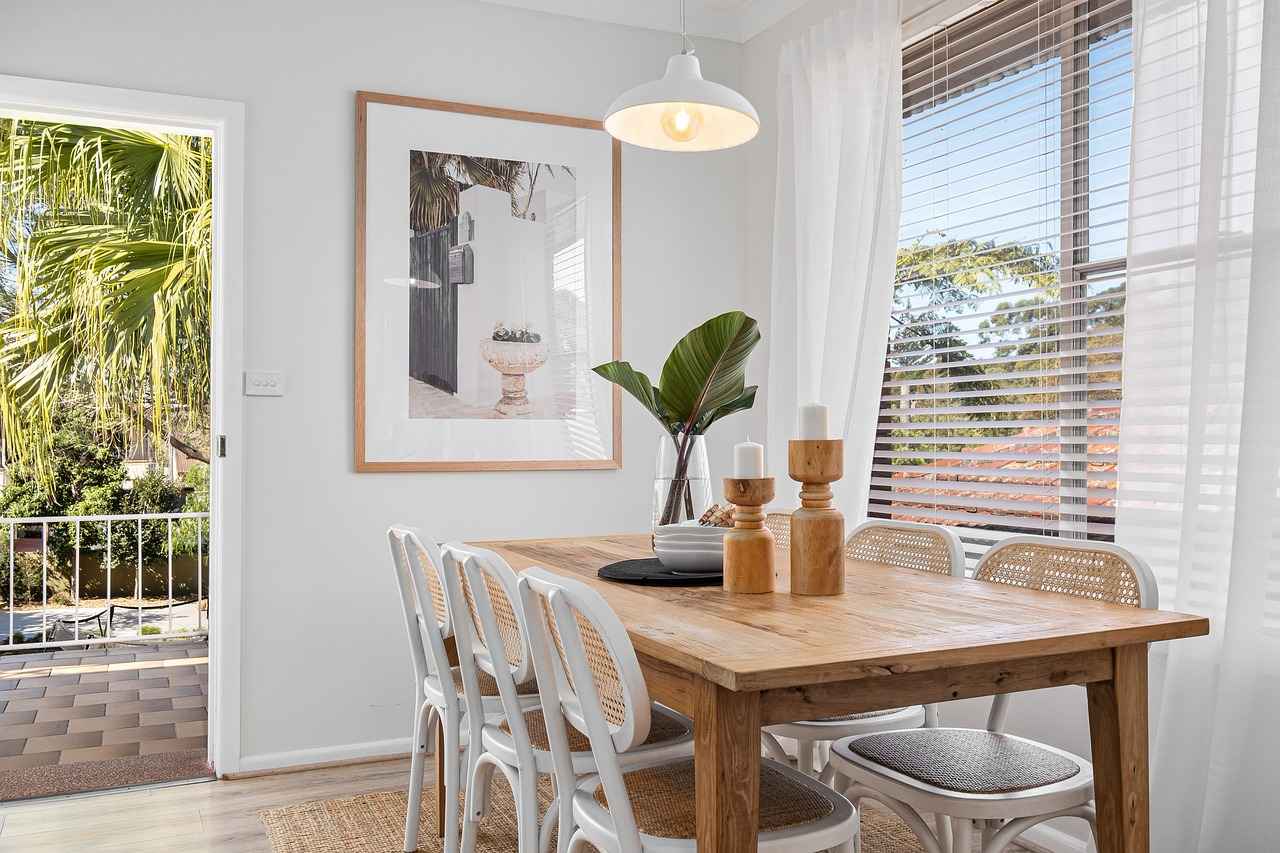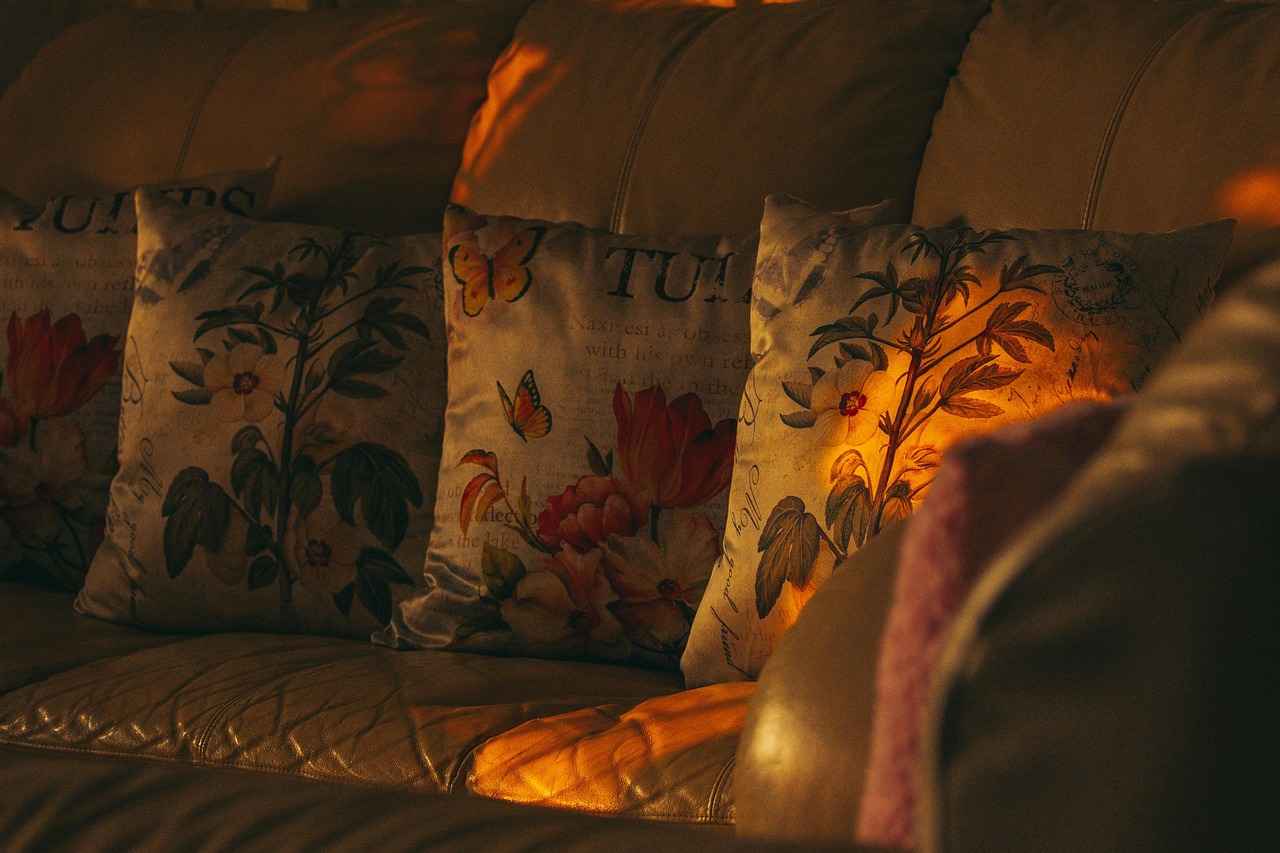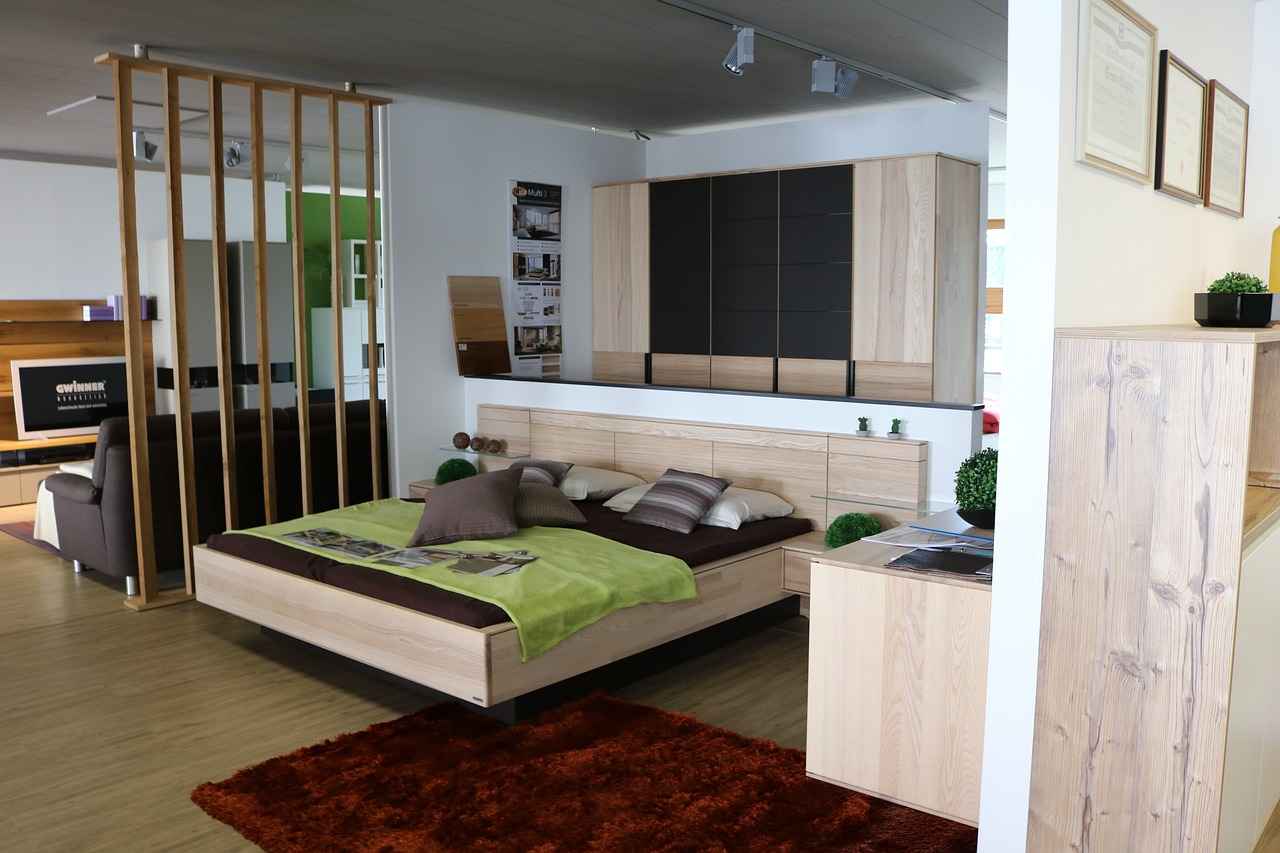This article explores various sources and strategies for finding affordable and second-hand room dividers, providing practical insights for budget-conscious consumers and interior design enthusiasts alike.
Room dividers are versatile elements that help in creating distinct areas within a space. They can be used in homes, offices, or any setting where separation of space is desired. These dividers come in various forms, including folding screens, bookshelves, and curtains. The benefits of using room dividers include:
- Enhanced Privacy: They provide a sense of privacy in shared spaces.
- Space Optimization: Dividers can help in maximizing the utility of a room.
- Decorative Appeal: They can also serve as a stylish element in your interior design.
Choosing discounted room dividers allows consumers to save money while still obtaining quality products. This not only helps in managing budgets but also contributes to sustainability by promoting the reuse of materials. The financial benefits can be significant, especially for those redecorating or furnishing a new space.
Finding second-hand room dividers can be an exciting adventure. Here are some prime locations to consider:
- Thrift Stores: Often stocked with unique items at low prices.
- Online Marketplaces: Websites like eBay, Craigslist, and Facebook Marketplace offer a vast array of options.
- Local Classifieds: Community boards and local ads can lead to great finds.
Online marketplaces are treasure troves for second-hand items. To make the most out of your search:
- Use Specific Keywords: Search using terms like “room divider” or “screen” to narrow down results.
- Negotiate Prices: Don’t hesitate to haggle; many sellers expect it.
- Check Reviews: Look for sellers with positive feedback to ensure quality.
When purchasing used room dividers, it is crucial to assess:
- Material Quality: Ensure the material is durable and in good condition.
- Overall Condition: Check for any damages or wear and tear.
- Style Compatibility: Consider whether the divider fits your existing decor.
Creating your own room dividers can be a fun and cost-effective project. Some popular DIY ideas include:
- Fabric Panels: Use tension rods and fabric to create a soft divider.
- Wooden Pallets: Repurpose pallets for a rustic look.
- Hanging Plants: Use shelves or hooks to hang plants as natural dividers.
Old furniture can be transformed into functional room dividers. Some creative ideas include:
- Bookshelves: Position them to create a partition while providing storage.
- Folding Screens: Repaint or reupholster old screens for a fresh look.
- Cabinets: Use a tall cabinet to separate spaces while offering storage.
The choice of material significantly affects the aesthetics and functionality of room dividers. Common materials include:
- Wood: Offers durability and warmth.
- Fabric: Provides softness and versatility.
- Metal: Adds a modern touch and strength.
Styling room dividers can enhance your interior design. Consider these techniques:
- Color Coordination: Match the divider with your color scheme.
- Incorporate Decor: Add wall art or lights to the divider.
- Layering: Use multiple dividers for a more dynamic look.
With sustainability in mind, many brands now offer eco-friendly room dividers made from recycled materials or sustainably sourced woods. Choosing these options not only benefits the environment but also adds a unique touch to your decor.
Unleash your creativity with innovative room divider ideas that can add character to any space:
- Artistic Screens: Use art pieces as dividers.
- Green Walls: Incorporate living plants for a natural divider.
- Light Panels: Use translucent materials to create illuminated dividers.
Proper maintenance can extend the life of your room dividers. Here are some tips:
- Regular Cleaning: Dust and clean surfaces regularly.
- Repair Damage: Address any chips or scratches immediately.
- Repaint or Reupholster: Refresh the look periodically.

What Are Room Dividers and Their Benefits?
Room dividers are versatile elements that can significantly enhance the functionality and aesthetics of any space. They serve as practical solutions for creating separate areas within homes and offices, allowing for better organization and privacy. In this section, we will explore the purpose, types, and numerous advantages of using room dividers in various settings.
Room dividers are physical barriers that segment a larger area into smaller, more manageable sections. They can take many forms, including screens, curtains, shelves, and even furniture. These dividers are not only functional but can also serve as decorative elements, contributing to the overall design of a room.
- Folding Screens: These are portable and can be easily moved or stored when not in use.
- Bookshelves: A practical option that provides storage while dividing space.
- Curtains: Soft and flexible, curtains can create a cozy atmosphere.
- Sliding Panels: Ideal for modern spaces, they offer a sleek look and can be adjusted as needed.
- Glass Partitions: Perfect for offices, these allow light to flow while maintaining separation.
Incorporating room dividers into your space comes with a multitude of benefits:
- Enhanced Privacy: They provide a sense of separation in shared spaces, making it easier to focus or relax.
- Improved Functionality: By creating distinct areas, room dividers help in organizing activities, whether it’s a home office, a play area, or a cozy reading nook.
- Design Flexibility: With various styles and materials available, room dividers can complement or enhance the existing decor.
- Space Optimization: They allow for better utilization of square footage, especially in smaller homes or apartments.
- Easy Installation: Most room dividers require minimal effort to set up, making them an accessible option for anyone looking to transform their space.
In summary, room dividers are an excellent investment for both residential and commercial spaces. They offer practical solutions for creating separate areas, enhancing privacy, and improving overall functionality. With a variety of types and styles available, there is a room divider to suit every need and aesthetic preference. Whether you’re looking to create a more organized workspace or a serene retreat in your home, room dividers are versatile tools that can help achieve your design goals.

Why Choose Discounted Room Dividers?
When it comes to interior design, budget constraints can often limit choices. However, opting for discounted room dividers presents an excellent opportunity to enhance your space while saving money. This section delves into the financial advantages and the environmental benefits associated with choosing discounted options.
First and foremost, the most apparent benefit of selecting discounted room dividers is the cost savings. High-quality dividers can be expensive, but discounted options allow you to achieve the same aesthetic and functionality without breaking the bank. Whether you’re a homeowner looking to create distinct areas in an open-plan living space or a business aiming to maximize office productivity, discounted dividers can help you achieve your goals at a fraction of the cost.
Moreover, purchasing discounted room dividers can be a wise financial investment. Many retailers offer seasonal sales, clearance items, or special promotions that can lead to significant savings. By keeping an eye on these opportunities, you can find high-quality dividers that fit your budget. Additionally, buying discounted items often means you can allocate more of your budget to other aspects of your interior design, such as furniture or decor.
In addition to financial benefits, choosing discounted room dividers can also have a positive environmental impact. By opting for these items, you are often selecting products that may have been overproduced or are being sold at a reduced price to clear inventory. This practice helps reduce waste and encourages a more sustainable approach to consumerism. Furthermore, many discounted dividers are made from recycled or eco-friendly materials, allowing you to furnish your space responsibly.
Moreover, selecting discounted or second-hand room dividers can contribute to a more circular economy. By purchasing items that have already been produced, you help reduce the demand for new products, which in turn decreases the environmental strain associated with manufacturing. This choice aligns with a growing trend among consumers who prioritize sustainability and seek to minimize their carbon footprint.
Another aspect to consider is the variety available in discounted room dividers. Many retailers offer a diverse selection of styles, materials, and designs, allowing you to find something that perfectly fits your aesthetic without overspending. From modern, sleek designs to rustic, vintage-inspired pieces, the options are plentiful.
Additionally, the quality of discounted room dividers is often comparable to their full-priced counterparts. Many manufacturers produce items that are both affordable and durable, ensuring that you do not have to compromise on quality for the sake of savings. When shopping for discounted room dividers, it is essential to examine the materials and craftsmanship to ensure that you are making a wise investment.
In summary, choosing discounted room dividers is not only a cost-effective solution but also a sustainable choice that positively impacts the environment. By taking advantage of sales, clearance items, and second-hand options, you can furnish your space beautifully while adhering to a budget. The variety and quality available in discounted options ensure that you do not have to sacrifice style for savings. Embracing this approach to interior design can lead to a more affordable and environmentally friendly living or working space.

Where to Shop for Second-Hand Room Dividers?
Finding second-hand room dividers can indeed feel like a treasure hunt, but with the right strategies, you can uncover some fantastic deals. Whether you’re looking to create a cozy nook in your home or separate spaces in an office, second-hand options can provide both style and functionality at a fraction of the cost. This section will outline the best places to search for these hidden gems, including thrift stores, online marketplaces, and local classifieds.
Thrift stores are often overlooked when it comes to home decor, but they can be a goldmine for finding unique room dividers. These stores typically have a rotating inventory, so frequent visits can yield different results. Look for items like old screens, vintage furniture, or even fabric that can be repurposed. Don’t forget to check for any DIY potential—many items can be easily transformed with a bit of creativity and effort.
Platforms like eBay, Facebook Marketplace, and Craigslist offer vast selections of second-hand room dividers. These sites allow you to filter your search based on location, price, and style, making it easier to find exactly what you need. When using these platforms, be sure to:
- Set a budget and stick to it.
- Research the seller’s ratings and reviews.
- Ask questions about the item’s condition and dimensions.
Local classifieds, whether in print or online, can be a valuable resource for finding second-hand room dividers. Websites like Nextdoor or local Facebook groups often have community members selling items directly. This not only supports local sellers but can also allow for negotiation on prices. Be sure to act quickly, as good deals can disappear fast!
Don’t underestimate the power of garage sales and estate sales. These events can offer a plethora of items, including room dividers. Arriving early gives you the best chance to find quality pieces before they are snatched up by other bargain hunters. Bring cash and be prepared to haggle; many sellers are open to negotiation, especially if items have been sitting unsold for a while.
Social media platforms are increasingly becoming popular for buying and selling second-hand items. Following local buy/sell/trade groups on platforms like Instagram and Twitter can lead you to incredible finds. Many sellers post pictures of their items, allowing you to see exactly what you’re getting before making a trip. Engaging with these communities can also provide insights into the best places to shop.
In conclusion, the search for second-hand room dividers can be both exciting and rewarding. By exploring thrift stores, online marketplaces, local classifieds, garage sales, and social media, you can find unique pieces that enhance your space without breaking the bank. Keep an open mind, be patient, and you may just discover the perfect room divider to suit your needs.

How to Use Online Marketplaces Effectively?
In today’s digital age, online marketplaces have revolutionized the way we shop for home decor items, including second-hand room dividers. Platforms like eBay and Facebook Marketplace provide extensive options, making it easier for consumers to find unique pieces at affordable prices. However, navigating these platforms effectively is crucial to ensure a satisfactory purchase experience. Below are some valuable tips to help you make the most out of your online shopping journey.
When searching for second-hand room dividers, using the right keywords can significantly impact your results. Start with broad terms like “room dividers”, then narrow down with specific styles or materials, such as “wooden room dividers” or “fabric room screens”. Utilize filters to sort results by distance, price range, and condition to find the best options available.
Negotiation is a common practice in online marketplaces. When you find a room divider you like, consider the following tips:
- Research Prices: Look at similar listings to gauge a fair price.
- Be Polite: Always approach sellers with respect; a friendly message can go a long way.
- Make a Reasonable Offer: Propose a price that reflects the item’s condition and market value.
Quality assurance is vital when purchasing second-hand items. Here are some steps to follow:
- Request Detailed Photos: Ask the seller for close-up images to assess the condition.
- Inquire About Material: Understand what materials were used to ensure durability.
- Check Seller Ratings: Look at reviews and ratings from previous buyers to gauge reliability.
Safety should always be a priority in any online transaction. Here are some tips:
- Meet in Public Places: If possible, arrange to meet the seller in a well-lit, public area.
- Use Secure Payment Methods: Opt for payment options that offer buyer protection.
- Trust Your Instincts: If something feels off, it’s okay to walk away from the deal.
By following these strategies, you can enhance your experience in online marketplaces, ensuring you find the perfect second-hand room divider that meets your needs and budget. Happy shopping!

What to Look for When Buying Used Room Dividers?
When it comes to enhancing your living space, used room dividers can be both a stylish and economical choice. However, making the right purchase requires careful consideration. Below are some essential factors to keep in mind when buying used room dividers.
The material of the room divider is a crucial aspect to consider. Common materials include wood, metal, and fabric. Each has its own advantages:
- Wood: Offers durability and a classic aesthetic. Check for any signs of damage, such as scratches or warping.
- Metal: Provides a modern look and is often more resilient to wear and tear. Look for rust or corrosion.
- Fabric: Adds softness to a space but may require frequent cleaning. Ensure there are no stains or tears.
When buying used, the condition of the room divider is paramount. Inspect it closely for:
- Structural Integrity: Ensure that all parts are intact, and the divider stands firmly without wobbling.
- Cosmetic Issues: Look for scratches, dents, or discoloration that may affect its appearance.
- Functionality: If the divider has moving parts, like folding panels, test them to confirm they operate smoothly.
It’s essential to consider how the used room divider will fit into your existing decor. Think about:
- Color Schemes: Choose a divider that complements or contrasts effectively with your current color palette.
- Design Aesthetics: Whether your style is modern, rustic, or eclectic, ensure the divider aligns with your overall theme.
- Size and Proportion: Measure the space where you intend to place the divider to ensure it fits appropriately without overwhelming the room.
While used items can save you money, it’s crucial to assess their value. Compare prices across different platforms and consider:
- Market Rates: Research similar dividers to gauge if you’re getting a fair price.
- Potential for Restoration: Sometimes, a less expensive item may require repairs, which could add to your overall cost.
When purchasing from online marketplaces or local sellers, consider the reputation of the seller. Look for:
- Reviews and Ratings: Check feedback from previous buyers to gauge reliability.
- Return Policy: Understand the return policy in case the divider does not meet your expectations.
By taking these factors into account, you can make a more informed decision when purchasing used room dividers. This not only ensures you get a quality product but also enhances your living space in a budget-friendly manner.

Can DIY Room Dividers Save Money?
Creating your own room dividers can be a fun and cost-effective project that allows you to customize your space while saving money. This section will explore various DIY ideas, the materials needed, and provide step-by-step instructions for crafting unique dividers that suit your home or office.
DIY room dividers offer several advantages:
- Cost Savings: Making your own dividers can be significantly cheaper than purchasing ready-made options.
- Customization: You can tailor the size, style, and color to fit your specific needs.
- Creative Expression: Engaging in a DIY project allows for personal creativity and satisfaction.
Depending on the style you choose, the materials may vary. Here are some common options:
- Wood: Plywood, reclaimed wood, or pallets can create sturdy dividers.
- Fabric: Lightweight fabrics can be used for soft, flowing dividers.
- Metal: For a modern look, consider using metal frames or screens.
- Plants: Incorporating plants can add a natural element to your divider.
1. Gather your materials: wooden panels, screws, hinges, and paint or stain (optional).2. Measure the space where the divider will be placed.3. Cut the wooden panels to your desired height and width.4. Assemble the panels using screws, creating a folding screen if desired.5. Sand the edges to avoid splinters.6. Paint or stain the wood for a finished look.7. Attach hinges if you want a folding divider.8. Place your new divider in the desired location.
Here are some creative ideas to inspire your DIY project:
- Bookshelf Dividers: Use an old bookshelf as a functional and decorative divider.
- Fabric Panels: Hang fabric from a curtain rod to create a soft, movable divider.
- Sliding Barn Doors: Install sliding doors for a rustic and stylish option.
- Artistic Screens: Use canvas or plywood to create a painted or printed screen.
To ensure your DIY room divider turns out well, consider the following tips:
- Plan Ahead: Sketch your design and gather all materials before starting.
- Safety First: Use protective gear when cutting or sanding materials.
- Take Your Time: Rushing can lead to mistakes; allow yourself adequate time to complete the project.
In summary, creating your own room dividers is not only a budget-friendly option but also a chance to express your creativity. With the right materials and a little effort, you can craft unique, functional dividers that enhance your living or working space.
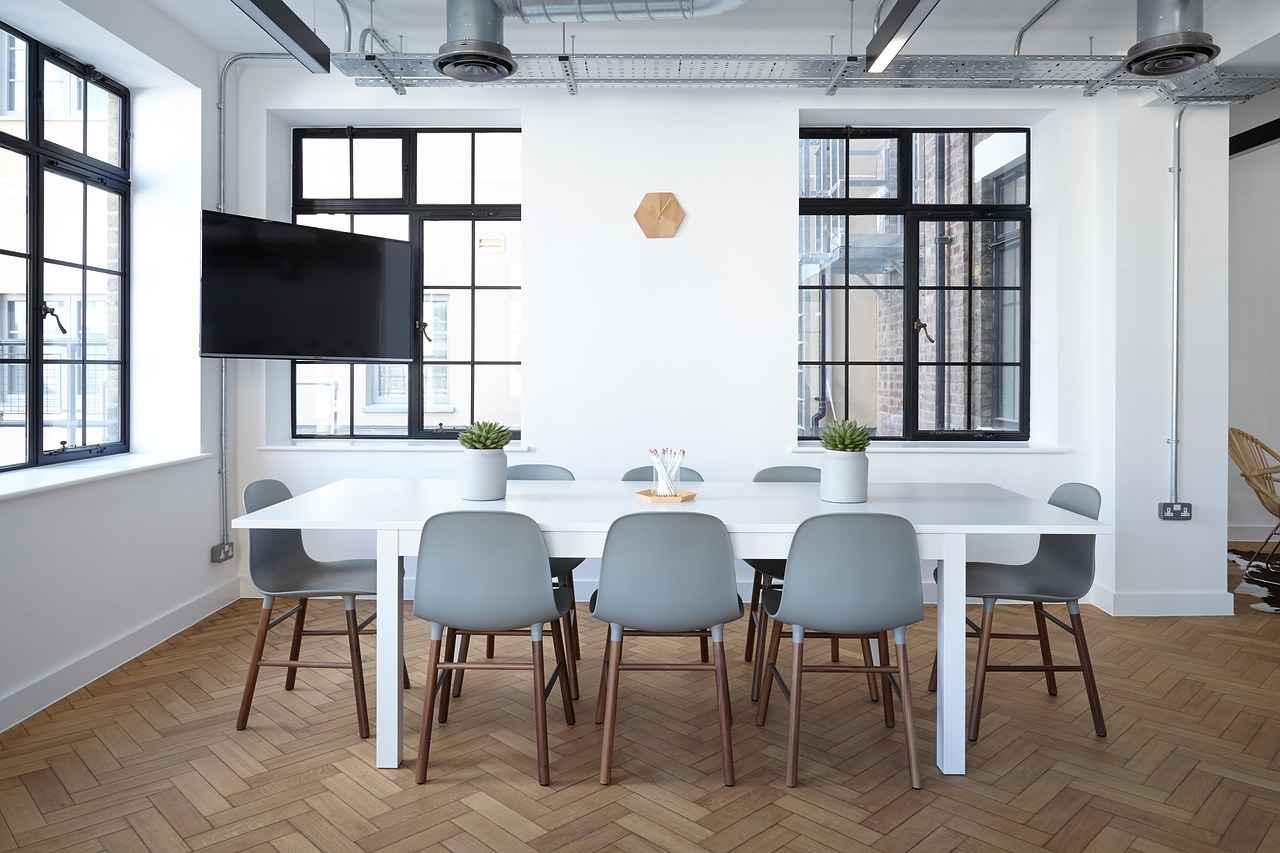
How to Repurpose Old Furniture as Room Dividers?
Repurposing old furniture can be an innovative and cost-effective way to create functional room dividers in your home. Not only does this approach promote sustainability by giving new life to items that might otherwise be discarded, but it also allows for a unique and personalized touch to your space. Here are some creative ideas and tips on how to transform old furniture into stylish room dividers.
- Bookshelves: One of the most popular options for room division is the use of bookshelves. These can be placed in the center of a room to create separate areas, such as a reading nook or a workspace. Consider painting or staining the bookshelf to match your decor, and fill it with books or decorative items to enhance its visual appeal.
- Folding Screens: If you have an old folding screen, it can serve as an excellent room divider. You can repaint or reupholster it to give it a fresh look. Folding screens are versatile and can easily be moved around, making them perfect for temporary divisions.
- Old Doors: Repurposing old doors as room dividers can add a rustic charm to your space. You can hinge them together to create a folding divider or mount them on the wall as a fixed partition. Adding a coat of paint or distressing the surface can enhance their character.
- Dressers and Armoires: Tall dressers or armoires can function as substantial room dividers while providing additional storage. Position them strategically to separate spaces without blocking light. You can also decorate the exterior with wallpaper or decals to match your interior style.
- Windows and Shutters: Old window frames can be transformed into beautiful dividers. You can hang them from the ceiling or lean them against a wall to create a semi-transparent barrier. Similarly, vintage shutters can be mounted on a wall to provide a unique and functional division.
- Benches and Storage Ottomans: If you have benches or storage ottomans, these can serve dual purposes as seating and dividers. Place them in open areas to define spaces while providing additional seating options.
When considering how to repurpose old furniture as room dividers, keep the following tips in mind:
- Measure Your Space: Before selecting furniture for repurposing, measure the area where you intend to place the divider. This ensures that the piece will fit well and serve its intended purpose.
- Choose Functional Pieces: Opt for furniture that not only divides the space but also serves a practical function, such as providing storage or seating.
- Consider Aesthetics: Ensure that the style of the repurposed furniture aligns with your overall decor. A cohesive look will create a more harmonious environment.
- Personalize Your Design: Feel free to customize the furniture with paint, fabric, or other decorative elements to reflect your personal style.
Repurposing old furniture as room dividers can transform your living space into a more organized and aesthetically pleasing environment. By using creativity and resourcefulness, you can achieve a functional and stylish solution that enhances your home’s design.

What Are the Best Materials for Room Dividers?
When it comes to designing spaces, the choice of materials for room dividers can greatly influence both the aesthetics and functionality of a room. Understanding the pros and cons of various materials can help you make an informed decision that aligns with your design goals and practical needs.
Wood is one of the most popular materials for room dividers, known for its timeless appeal and natural warmth. Here are some key points to consider:
- Pros: Wood adds a cozy feel to any space, is sturdy, and can be easily customized with stains or paints.
- Cons: It can be expensive, may warp in humid conditions, and requires regular maintenance to keep it looking good.
Fabric room dividers offer a soft and inviting alternative, making them ideal for areas where you want to create a relaxed atmosphere. Consider the following:
- Pros: They are lightweight, easy to move, and available in a wide range of colors and patterns.
- Cons: Fabric can absorb odors and stains, and may not provide as much privacy as other materials.
Metal dividers bring a contemporary edge to any space, often used in modern or industrial-style interiors. Here’s what to keep in mind:
- Pros: They are durable, resistant to moisture, and can be designed in intricate patterns for added visual interest.
- Cons: Metal can feel cold or uninviting, and may require special care to prevent rust or scratches.
Glass room dividers are perfect for those who want to maintain an open feel while still defining spaces. Some advantages and disadvantages include:
- Pros: They allow natural light to flow through, making spaces feel larger and more airy.
- Cons: Glass can be fragile, requiring careful handling, and may not offer complete privacy.
For a budget-friendly option, plastic or acrylic dividers can be an excellent choice. Here are their benefits and drawbacks:
- Pros: They are lightweight, easy to clean, and available in a variety of colors and styles.
- Cons: They may not be as durable as other materials and can scratch easily.
In conclusion, when selecting a material for your room divider, it’s essential to consider not only the visual impact but also the practicality of each option. Wood, fabric, metal, glass, and plastic all offer unique benefits and potential drawbacks. By evaluating your specific needs and preferences, you can choose the perfect material that enhances both the functionality and beauty of your space.

How to Style Room Dividers in Your Space?
Styling room dividers can significantly enhance your interior design, transforming them from simple functional pieces into attractive focal points. With a variety of styling techniques and decor ideas available, you can easily integrate room dividers into your space while adding personality and flair.
To effectively style a room divider, consider the following techniques:
- Color Coordination: Choose colors that complement your existing decor. This can create a harmonious look, making the divider blend seamlessly with your environment.
- Textural Contrast: Incorporate different materials, such as wood, metal, or fabric, to add depth and interest. A wooden divider with a fabric overlay can create a stunning visual contrast.
- Layering: Use multiple dividers to create a layered effect. This can add dimension to your space and allow for more creative arrangements.
Decor elements can elevate the appearance of room dividers:
- Artwork: Hang artwork or photographs on the divider to personalize it. This not only enhances its aesthetic but also allows you to express your style.
- Plants: Adding potted plants or hanging greenery can soften the look of a room divider and bring a touch of nature indoors.
- Lighting: Incorporate LED strip lights or fairy lights around the divider for a warm and inviting glow, particularly in evening settings.
When selecting a room divider, consider:
- Size: Ensure the divider fits well within the space without overwhelming it. Measure the area to find the right proportions.
- Functionality: Think about what you want to achieve with the divider. Do you need privacy, separation, or just a decorative element?
- Style: Match the divider’s style to your overall decor theme—be it modern, rustic, or minimalist—for a cohesive look.
Here are some innovative ideas to style your dividers:
- DIY Projects: Consider creating a custom divider using reclaimed wood or old doors. This can add a unique touch to your interior.
- Fabric Panels: Use fabric to cover a plain divider, allowing for patterns and textures that can be easily changed with the seasons.
- Mirrored Dividers: Incorporate mirrors into your divider design to create an illusion of space and light, enhancing the overall ambiance of the room.
To keep your room dividers looking their best, regular maintenance is essential:
- Cleaning: Dust and clean your dividers regularly to prevent build-up, especially if they are made of fabric or have intricate designs.
- Repairs: Address any damages promptly. A small scratch or dent can be fixed easily and will help maintain the overall appearance.
- Seasonal Updates: Change decor elements seasonally to refresh the look of your divider and keep your space feeling vibrant.
In summary, styling room dividers allows you to enhance your interior design while providing functionality. By employing various techniques and decor ideas, you can make dividers not only practical but also a key element of your home’s aesthetic.

Are There Eco-Friendly Options for Room Dividers?
Sustainability has become a crucial aspect of modern design, influencing various industries, including interior decor. As consumers increasingly prioritize environmentally friendly choices, the demand for eco-friendly room dividers has surged. This section delves into the types of sustainable materials and brands that cater to environmentally conscious consumers, offering stylish solutions that do not compromise our planet.
- Recycled Materials: Many manufacturers are now producing room dividers from recycled materials. These can include reclaimed wood, recycled metal, and even repurposed fabric. By choosing dividers made from these materials, consumers can significantly reduce their carbon footprint.
- Natural Fibers: Room dividers crafted from natural fibers, such as bamboo, jute, or hemp, are not only sustainable but also add a touch of organic beauty to any space. Bamboo, in particular, is known for its rapid growth and minimal environmental impact.
- Low-VOC Finishes: When selecting room dividers, it’s essential to consider the finishes used. Opting for products with low or zero volatile organic compounds (VOCs) ensures that the air quality in your home remains healthy, while also being better for the environment.
- Local Artisans: Supporting local artisans who create handmade room dividers from sustainable materials can be a great way to promote eco-friendly practices. These products often reflect the unique culture and craftsmanship of the area, making them not just eco-friendly but also one-of-a-kind.
Several brands have emerged as leaders in the eco-friendly room divider market. For instance, EcoBalanza specializes in sustainable furniture that uses non-toxic finishes and sustainably sourced materials. Their room dividers are designed to be functional while also minimizing environmental impact.
Another notable brand is Room & Board, which offers a range of room dividers made from responsibly harvested wood and recycled materials. Their commitment to sustainability is evident in their manufacturing processes and the quality of their products.
For those who prefer a more hands-on approach, DIY room dividers using reclaimed materials can be a rewarding project. Not only does this allow for customization, but it also promotes the recycling of old furniture and materials, giving them a new life as functional decor.
When considering eco-friendly options, it’s important to ask yourself a few questions:
- What materials are used in the construction of the room divider?
- Does the manufacturer adhere to sustainable practices?
- Are there certifications available that verify the eco-friendliness of the product?
By choosing eco-friendly room dividers, consumers can create beautiful, functional spaces while also contributing to a healthier planet. The options available today not only meet aesthetic and practical needs but also align with a growing commitment to sustainability.
In conclusion, the rise of eco-friendly room dividers reflects a broader shift towards sustainability in design. By opting for products made from recycled materials, natural fibers, and low-VOC finishes, consumers can enjoy stylish interiors that promote environmental responsibility. With numerous brands and DIY options available, finding the perfect sustainable room divider has never been easier.

What Are Some Creative Room Divider Ideas?
Room dividers are not just functional; they can also be a statement piece that enhances the overall aesthetic of a space. With a touch of creativity, ordinary room dividers can transform into stunning focal points that reflect your personal style. Here are some innovative and artistic ideas to inspire your next interior design project:
- Artistic Screens: Consider using decorative screens that showcase intricate designs or vibrant colors. These can serve as a striking backdrop while allowing light to filter through, creating an inviting atmosphere.
- Hanging Plants: Utilize vertical garden dividers by hanging plants from a trellis or a repurposed wooden frame. This not only adds a natural element to your space but also promotes a healthier indoor environment.
- Bookcase Dividers: Repurpose bookshelves as room dividers. This dual-purpose solution provides storage while visually separating areas. Style the shelves with books, decor, and plants to enhance their appearance.
- Fabric Curtains: Soft fabric curtains can add warmth and texture to a room. Choose bold patterns or colors that complement your decor, and hang them from a ceiling-mounted track for easy access.
- Glass Panels: For a modern touch, consider using glass panels as dividers. They allow for light to pass through while creating a sense of separation. Frosted glass can provide privacy without sacrificing brightness.
- Art Installations: Turn your room divider into a piece of art. Use canvas or wood to create a mural or a series of paintings that can be displayed as a divider, merging functionality with creativity.
- Metal Grids: Metal grids or latticework can create an industrial look. These can be painted or left in their natural finish, and you can even hang decorative items or plants from them for added flair.
- DIY Pallet Walls: Old wooden pallets can be transformed into rustic room dividers. With a bit of sanding and painting, they can become a charming addition that adds character to your home.
- Multi-Functional Furniture: Look for furniture pieces that can serve as dividers, such as a stylish console table or a decorative cabinet. These pieces can help delineate spaces while also providing storage or display options.
- Colorful Paint: If you have a plain wall that you want to transform, consider painting it a bold color or using stencils to create patterns. This can visually separate spaces without the need for physical dividers.
Incorporating these creative room divider ideas can significantly enhance the charm and functionality of your living spaces. Whether you prefer a modern aesthetic or a more traditional look, the possibilities are endless. By thinking outside the box, you can create a unique environment that reflects your personality while effectively dividing areas.
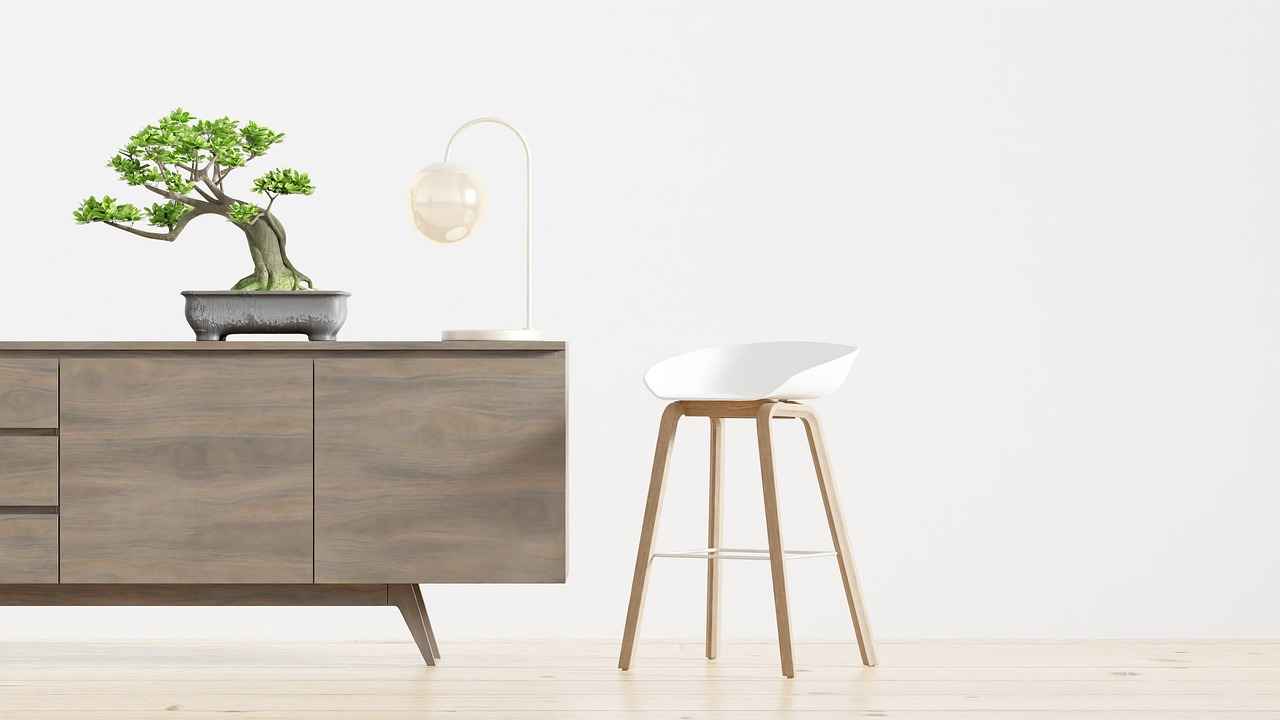
How to Maintain and Care for Room Dividers?
Maintaining room dividers is essential for ensuring their longevity and aesthetic appeal. Whether they are made of wood, fabric, or metal, each type requires specific care to keep them looking their best. This section provides practical tips for cleaning, repairing, and preserving various types of dividers, ensuring they remain functional and stylish.
Room dividers are not just functional; they also contribute to the overall decor of a space. Regular maintenance helps prevent wear and tear, which can lead to costly repairs or replacements. By investing a little time in their upkeep, you can extend their lifespan and maintain their appearance.
Different materials require different cleaning methods:
- Wood: Dust wooden dividers regularly with a soft cloth. For deeper cleaning, use a damp cloth with a mild soap solution, and dry immediately to avoid water damage.
- Fabric: Vacuum fabric dividers to remove dust and debris. For stains, check the care label for cleaning instructions. Spot clean with a fabric-safe cleaner or take them to a professional cleaner if necessary.
- Metal: Wipe metal dividers with a damp cloth and mild detergent. Avoid abrasive cleaners that can scratch the surface.
Over time, room dividers may incur minor damages such as scratches or dents:
- Wood: Use wood filler to repair scratches and dents. Once dried, sand the area lightly and touch up with matching paint or stain.
- Fabric: For small tears, use fabric glue or a needle and thread to stitch the area. Consider adding a patch for a decorative touch.
- Metal: For scratches, touch up with metal paint, ensuring the color matches the original finish.
To maintain the visual appeal of your room dividers:
- Placement: Avoid placing dividers in direct sunlight to prevent fading. Consider rotating them occasionally to ensure even wear.
- Protective Coatings: For wooden dividers, applying a protective sealant can prevent moisture damage and scratches.
- Styling: Enhance your dividers with decorative elements such as plants or artwork to keep the space fresh and inviting.
Conduct regular inspections of your room dividers to catch any issues early. Look for signs of damage, such as wobbling in wooden dividers or fraying in fabric ones. Addressing problems promptly can save you time and money in the long run.
Proper maintenance of room dividers is crucial for extending their life and preserving their beauty. By following these cleaning, repairing, and preserving tips, you can ensure that your dividers remain a stylish and functional part of your space for years to come.
Frequently Asked Questions
- What are room dividers used for?
Room dividers are versatile solutions that help create distinct areas within a larger space. They can be used in homes to separate living areas, in offices to provide privacy, or even in studios to define work zones. Think of them as the friendly walls that don’t need to be permanent!
- Where can I find discounted room dividers?
You can discover discounted room dividers at various places! Check out local thrift stores, online marketplaces like eBay or Facebook Marketplace, and even classified ads. It’s like a treasure hunt—who knows what unique finds you’ll uncover!
- Are DIY room dividers easy to make?
Absolutely! DIY room dividers can be a fun and creative project. With some basic materials and a sprinkle of imagination, you can craft something that’s not only budget-friendly but also uniquely yours. It’s like turning your vision into reality!
- What materials are best for room dividers?
The best materials for room dividers really depend on your style and needs. Wood offers durability and warmth, while fabric can add softness and texture. Metal is sleek and modern, making it a great choice for contemporary spaces. Choose what resonates with you!
- How can I maintain my room dividers?
Maintaining room dividers is simple! Regular cleaning, careful handling, and occasional repairs can keep them looking fresh. Just like any other piece of furniture, a little love goes a long way in extending their life!



